A Taste of Local Life at Dadaocheng Cisheng Temple
Dadaocheng was the first place I visited in Taipei, and I’m glad it was. It showed me the charming old Taipei away from the bustling city with its skyscrapers and shining malls.
During my walk, I discovered Dadaocheng Cisheng Temple, a quiet temple filled with intricate architecture where locals visit to do their religious practices away from tourist crowds.
But that’s not the only thing that makes it special. The small alleyway at the entrance of the temple is full of small stalls where you can enjoy authentic Taiwanese quick bites.
It felt like I was in an old movie, eating meals with locals under banyan trees after their religious practices. It’s truly a lesser-known side of Taipei that made the most impact on my trip.

Dadaocheng Cisheng Temple History
Dadaocheng Cisheng Temple, also known as the Dadaocheng Mazu is dedicated to Mazu, the guardian of sailors.
This temple is one of the three main temples in Dadaocheng, alongside FaChuKung Temple and the famous Xia Hai City God Temple.
The original temple was established in 1866 at the intersection of Xining North Road and Minsheng West Road.
The inscription on the front gate, “The first door opens to display the beauty of Guanyin Mountain; thousands of ships have navigated over the running waters,” highlights the temple’s deep historical ties to seafarers seeking blessings and protection.
In 1910, during the Japanese colonial period, the temple was demolished as part of urban redevelopment.
The local community, determined to preserve their cultural heritage, funded the relocation of the temple to its current site on Yanping North Road.
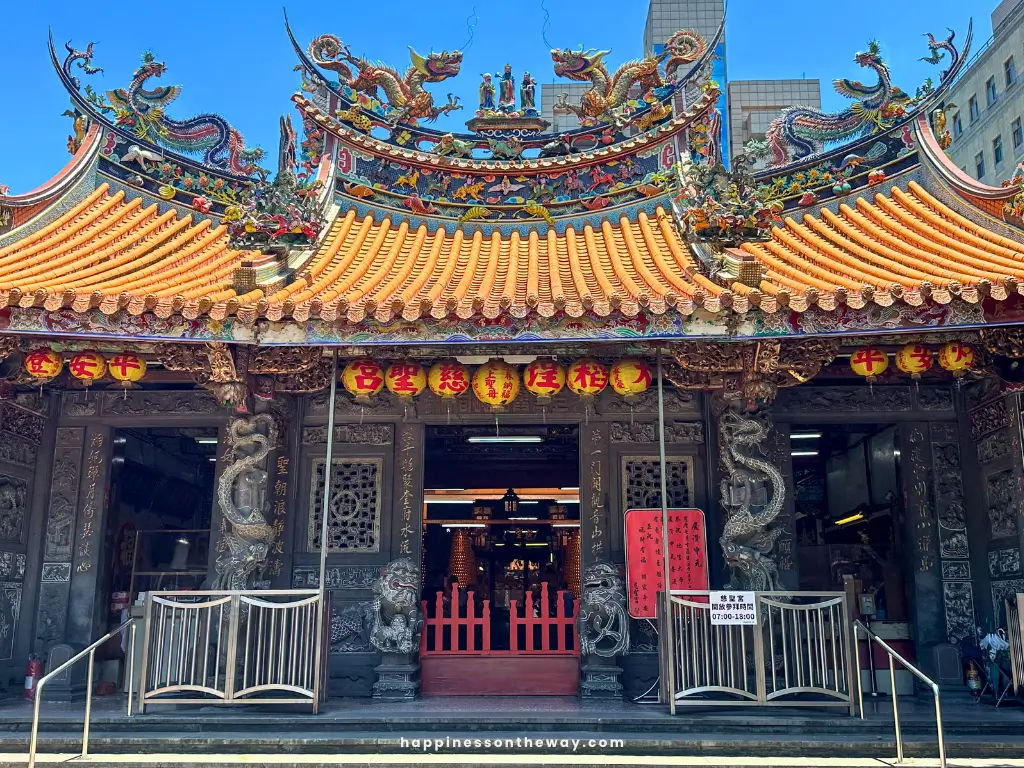
The reconstruction was completed in 1914, using the original pillars and stones to maintain its historical appearance. Today, Dadaocheng Cisheng Temple stands as a testament to the community’s resilience and devotion.
The temple hosts various religious ceremonies and festivals, particularly the birthday celebrations for Mazu.
Breakfast at Dadaocheng Cisheng Temple
The Taiwanese have a saying: “tsē lâng hó-tsiah mih,” which means “foods taste better when shared.” I really felt this at Cisheng Temple.
The stalls are lively, with people coming and going, and the air is filled with the aroma of street snacks perfect for breakfast, brunch, or lunch. If you’re looking for an authentic taste of Taipei, this is the place to be.
There are more than 20 food stalls lined up at the entrance. I visited two stalls because I’m a light eater.


The local vendors don’t speak English and their menus are also in Chinese, but they’ll do their best to understand you. To order, I either said the food or pointed at the menu.
A nice vendor was asking if I wanted sauce and we were trying to translate for a while until an English-speaking customer helped me. And even if your order isn’t right, you’ll still enjoy the food!
Most of the stalls are open from 9 AM to 5 PM, but some close at 3:30 PM, so you might want to get there a bit earlier to try a few different stalls.
Eat under the Banyan Trees
You can dine in front of the stalls and watch the locals cook. But I recommend finding a spot to sit and eat between the back of the stalls and the front of the temple, underneath the banyan trees.


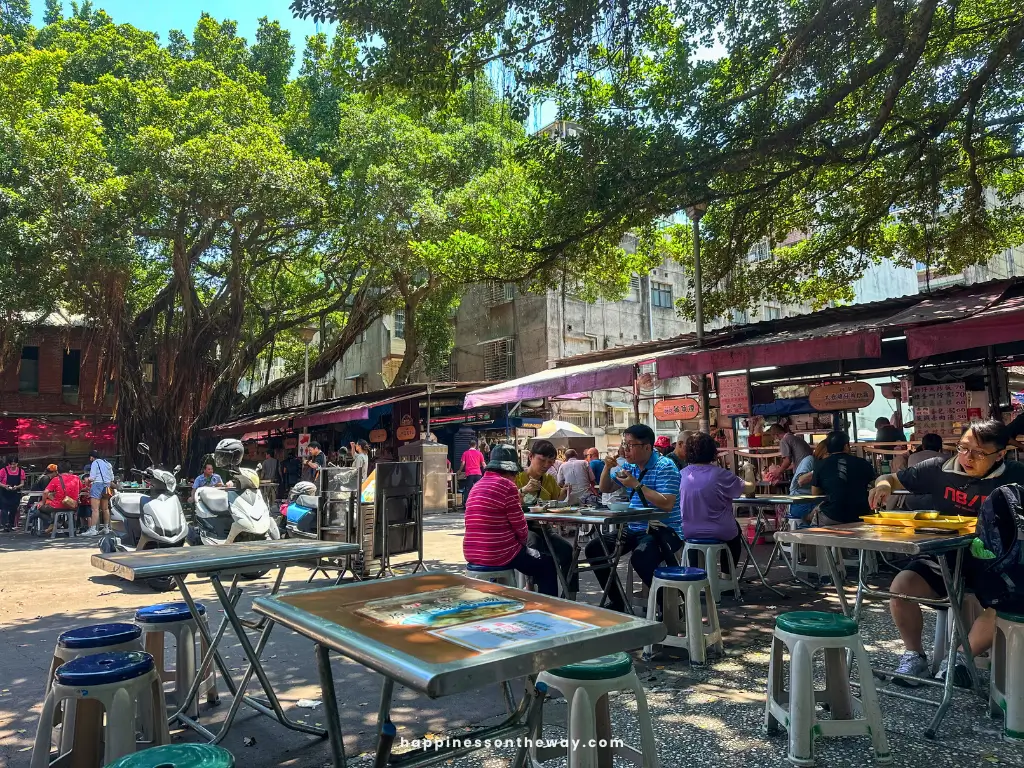
The entire scene was heartwarming for me to witness. Most of the locals, particularly families, were quietly savoring their meals after their religious service. I can’t stop smiling while having the best fried rice I’ve ever tasted (but more about that later).
Soup to Start Your Day
The soups at Cisheng Temple are a crowd favorite. One of the best is the Ye Family Meat Congee, which is not as soft as Cantonese congee but delightfully chewy. It’s best paired with fried red yeast pork for the ultimate flavor combo.
Unfortunately, Ye Family Meat Congee was closed when I visited. If you end up trying it, let me know how it is.
Another must-try is the pork rib soup – clear, lightly oily, with radish and tender pork ribs that fall off the bone.
The four-herb soup is another traditional delight. With a sweet taste of sugarcane and tender pig intestines, it’s best enjoyed with a hot steamed meat bun. Dip the bun in the soup for a taste that’s out of this world.
The Best Fried Rice


I didn’t have the soup, so I had room for a heavy meal and happily filled my stomach with A-lan’s fried rice. This whitebait fried rice is the best I’ve ever tasted, and I’m Asian!
Cooked on an iron plate, the rice is perfectly separated and lightly coated in soy sauce. It doesn’t have any visible oil, and with every bite, you get a burst of fresh fish accompanied by bits of egg. The flavor is light, yet fresh, and the aroma alone is enough to make your mouth water.
Price: 70 NTD
The Famous Chicken Rolls
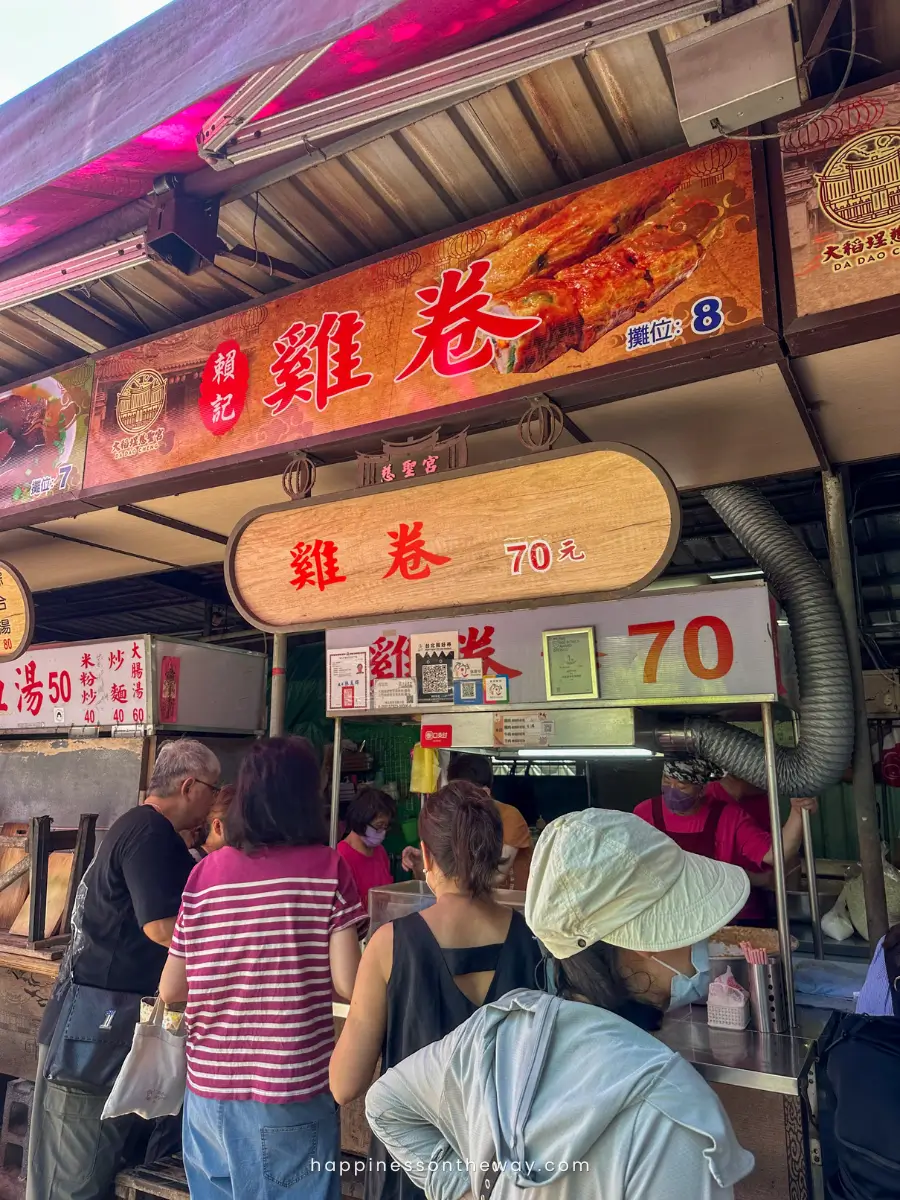
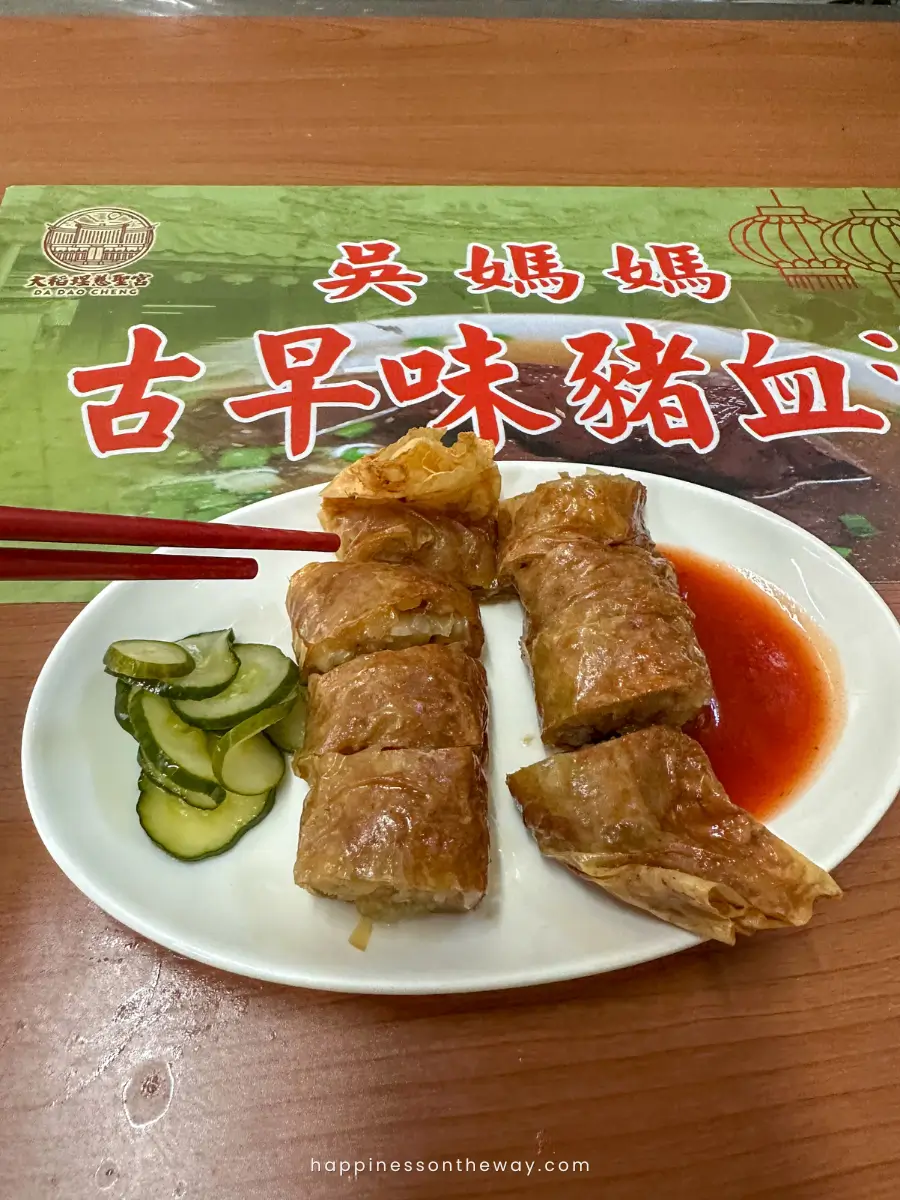
For another remarkable snack, try the golden chicken rolls from the nameless stall. Yup, it doesn’t have a name but you’ll see the chicken roll posted on the stall and there’s only one seller of this chicken roll.
These rolls are filled with onions and lean pork, wrapped in crispy, deep-fried skin, and served with sweet chili sauce. One bite, and you’ll see why this dish has been a favorite for decades.
Price: 70 NTD
Inside the Dadaocheng Cisheng Temple
Dadaocheng Cisheng Temple is a stunning example of traditional Chinese temple architecture.
The temple has sweeping, curved rooftops adorned with ornate carvings and colorful figures. These rooftops with upward curves are believed to ward off evil spirits.
As you approach the temple, you’ll notice the elaborately decorated entrance gate, known as a “pailou”. The gate is embellished with intricate woodwork and calligraphy.
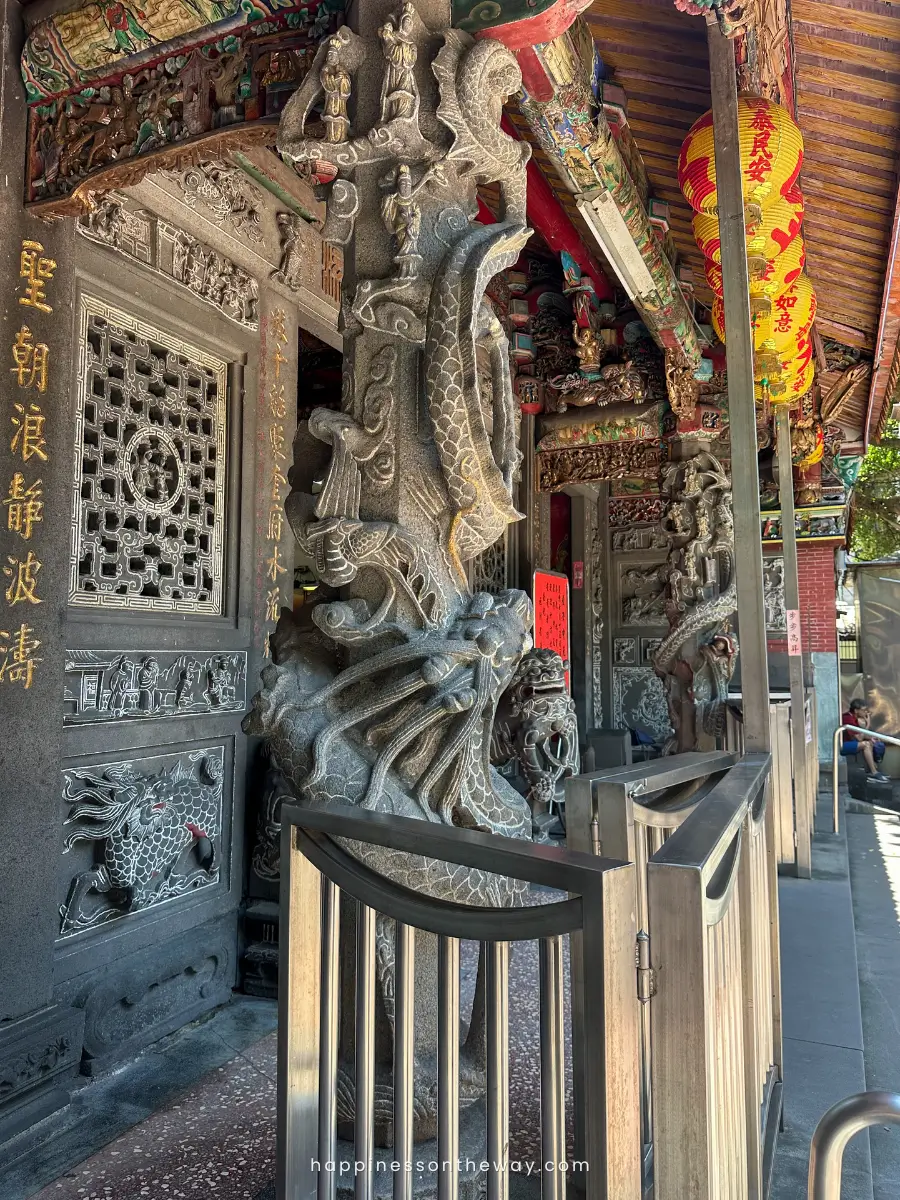
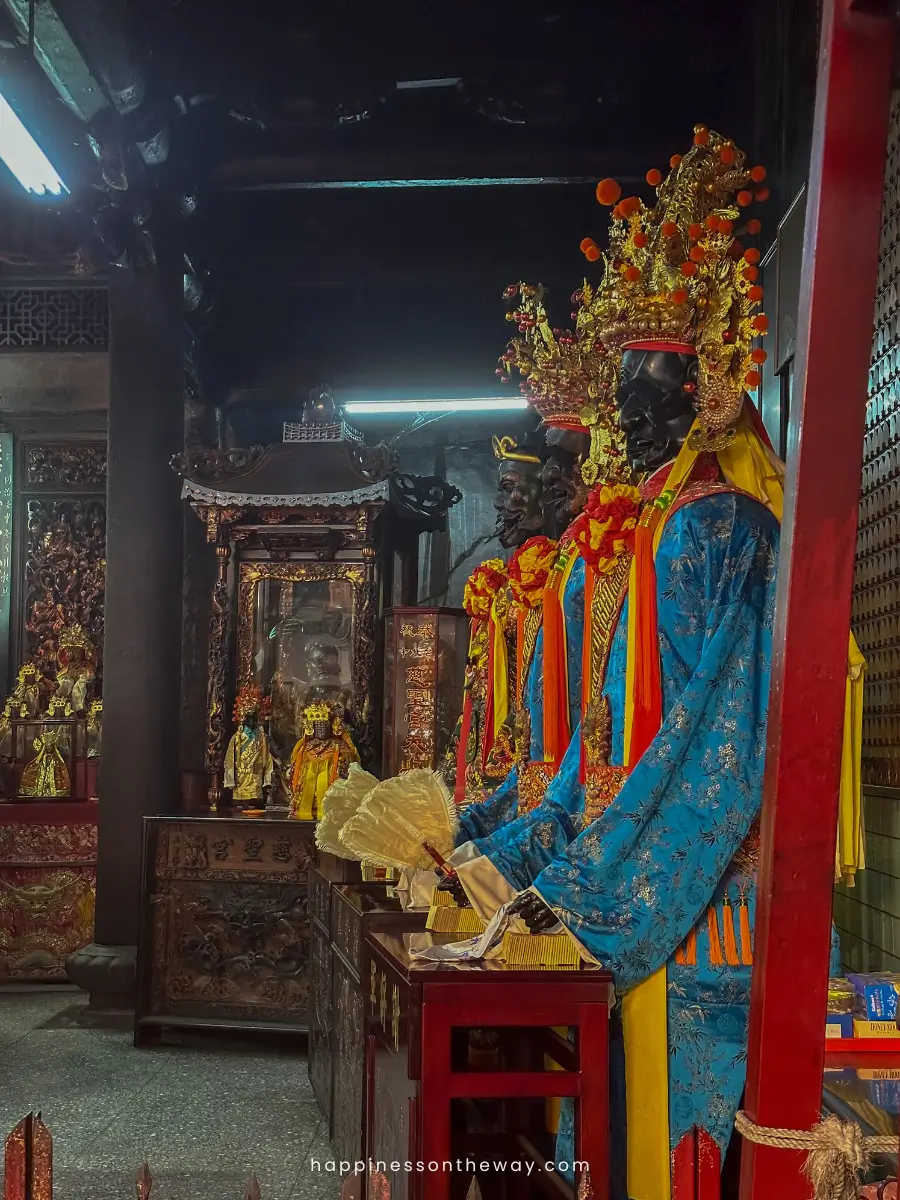
Inside, the temple is divided into several halls, each dedicated to different deities and featuring distinct architectural styles and decorations.
One of the most captivating aspects of the temple is its richly decorated main hall, where the statue of Mazu is enshrined. This statue is exquisitely crafted, holding a ceremonial tablet and dressed in traditional attire, symbolizing her protective role over seafarers.
The interior spaces are filled with the scent of incense, and offerings of fruit and flowers create a lively and colorful atmosphere. Inside, you’ll also notice locals doing different rituals.
One thing I particularly notice is the moon blocks or jiaobei. These are wooden divination tools from China, which are used in pairs and thrown to seek divine guidance in the form of a yes or no question.
A Secret Resting Place
I also found a peaceful place to sit and observe locals during their prayer rituals, with some shade. It’s located at the end of the main temple. Just take the left door and you’ll find it.

Where is Dadaocheng Cisheng Temple Located?
Dadaocheng Cisheng Temple is located in the historic Dadaocheng area of Taipei, specifically on Dihua Street.
The area is easily accessible by public transportation, with several bus lines and the Taipei Metro serving nearby stops. Look for the nearest stop on Google Maps and enjoy a walk while seeing local shops.
Dadaocheng Cisheng Temple Opening Hours
The temple is open from 7 a.m. to 6 p.m. daily. However, specific hours may vary, especially during special events or festivals.
Check in advance if you plan to visit during a religious holiday, as the temple may be busier or have restricted access during ceremonies.
Cisheng Temple Entrance Fees
Dadaocheng Cisheng Temple is free to visit throughout the year. Donations are welcome and help support the maintenance and activities of the temple.
Best Times to Visit
You can visit Dadaocheng Cisheng Temple anytime. Unlike Xia Hai City God Temple, it’s not crowded.
I recommend visiting from morning until lunchtime to experience the temple in a peaceful atmosphere, followed by a vibrant brunch with locals.
You can also visit during festivals, particularly the Mazu birthday celebrations, to witness colorful processions, traditional performances, and communal activities.
Dress Code and Etiquette
Like in any temple, it’s important to dress modestly and respectfully. This generally means covering shoulders and knees and avoiding overly casual attire like shorts or tank tops. Avoid loud conversations and show respect for the rituals within the temple.
Things To Do Near Dadaocheng Cisheng Temple
After visiting the temple, continue your walk in Dadaocheng for a vibrant old street, two temples, and a pier – the best sunset spot in Taipei!
Dihua Street
Just a short walk from the temple, Dihua Street is one of Taipei’s oldest and most vibrant streets. It is known for its preserved architecture and bustling market atmosphere.
The street is lined with traditional shops selling dried goods, Chinese medicine, and tea as well as boutiques offering handicrafts, singing bowls, and textiles.
At the other end of the street, you’ll also find the Dadaocheng Visitor Center, where you can rent qipao for free.
They recommend reserving a month before your visit, but I got one even without a reservation.
Taipei Xia-Hai City God Temple
While walking on Dihua Street, you will come across another important temple – the Taipei Xia-Hai City God Temple, famous for its “Love God.” This small yet popular temple is a favorite among locals and tourists seeking love and relationships.
The praying process is quite complicated and it takes about 30 minutes to complete. First, you need to purchase an incense set for $9 and then follow the signs inside the temple.
When I entered, it was quite crowded and difficult to see the signs. If you plan on participating in this ritual, I suggest familiarizing yourself with the process beforehand.
It’s definitely rewarding, especially considering the cookies that successful couples bring back. As of 2014, there have been 5,000 successful couples!
Dadaocheng Pier Plaza
I ended my visit to Dadaocheng at Dadaocheng Wharf (Dadaocheng Pier Plaza), and I’d recommend you do the same. Located along the Tamsui River, this is the best spot for sunset in Taipei!
If you come before sunset, enjoy your extra time with its cycling paths, a lively night market, local performances, or boat trips.
It’s a great spot to relax and enjoy the scenic riverfront, especially at sunset. Just take a look at the several photographers at the bridge waiting for it!
Full Post: Dadaocheng Pier Plaza: The Best Sunset Spot in Taipei
Is Dadaocheng Cisheng Temple Worth Visiting?
Absolutely! Even though it may not have as elaborate architecture as other famous temples, I recommend visiting Dadaocheng Cisheng Temple to witness locals during their daily rituals, including sharing meals.
The peaceful brunch under the Banyan trees was one of the best experiences I had in Taipei. I felt a strong connection to the place and its locals, not to mention I enjoyed the best fried rice I’ve ever tasted!

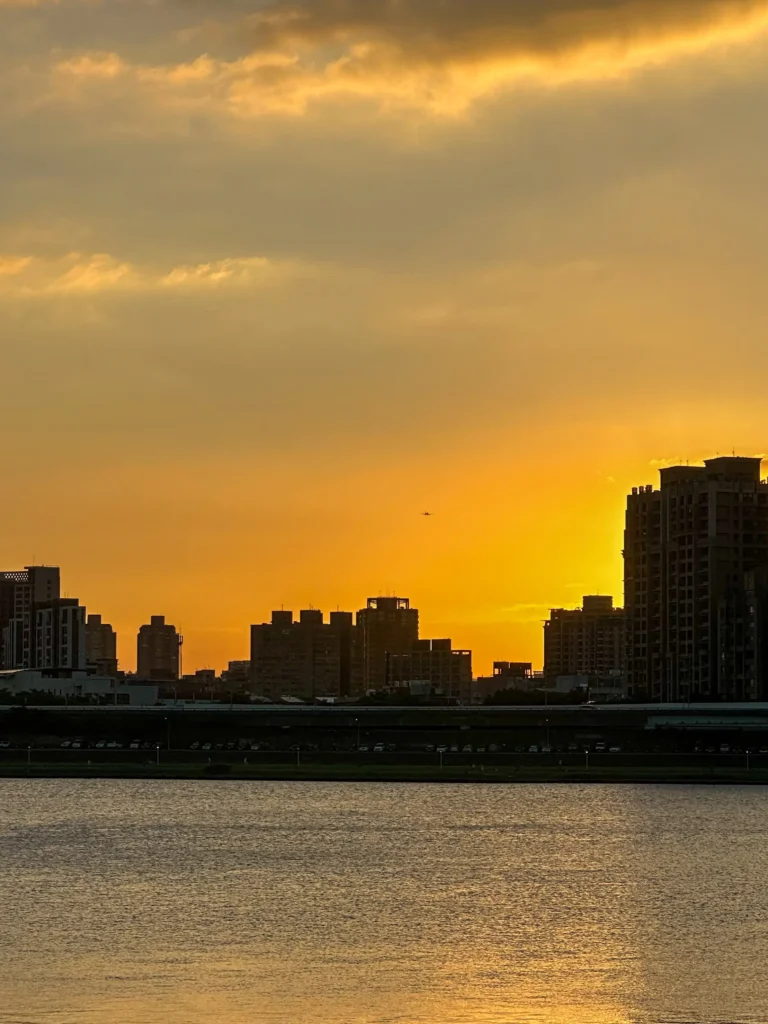
The description of the food stalls made me curious and hungry right away! Looking forward to get a taste of these tasty asian foods 🙂